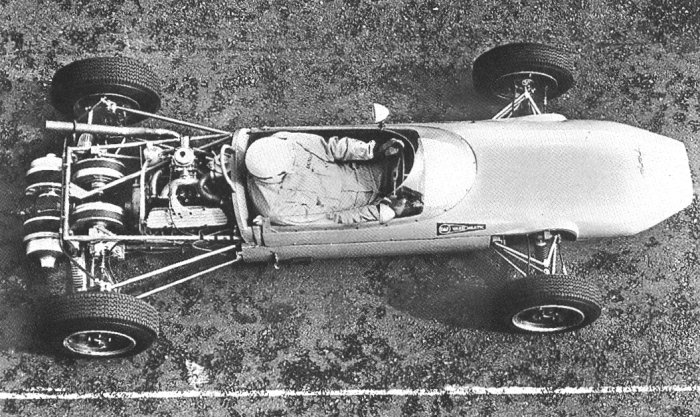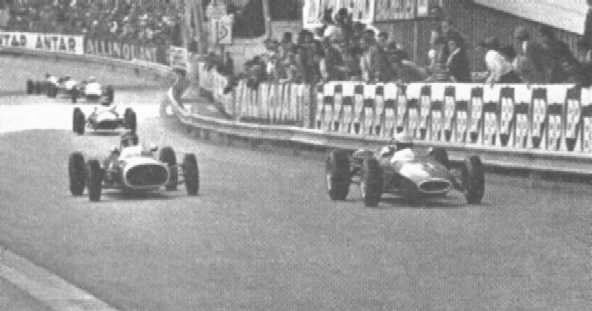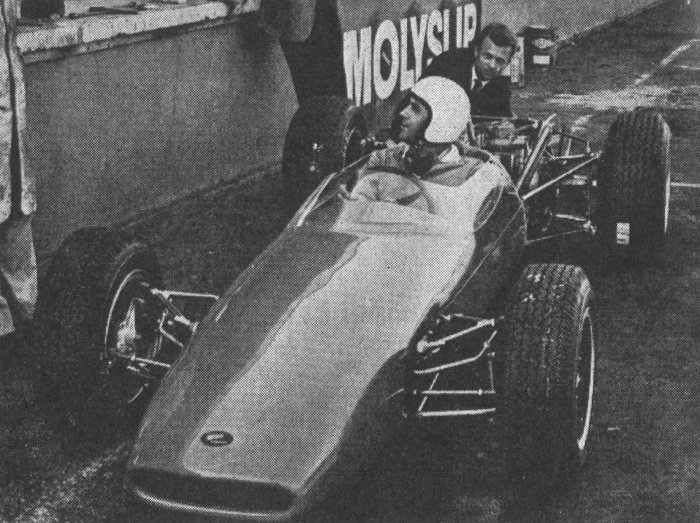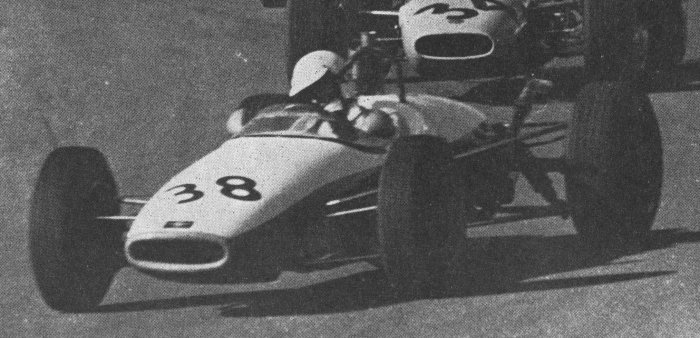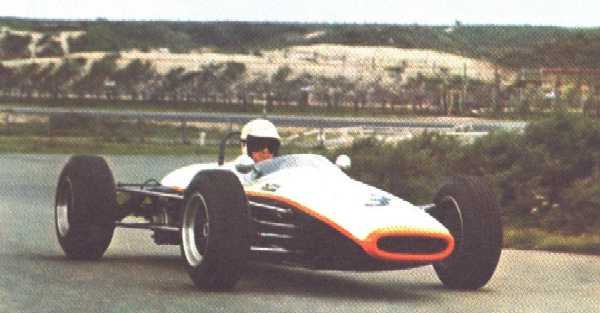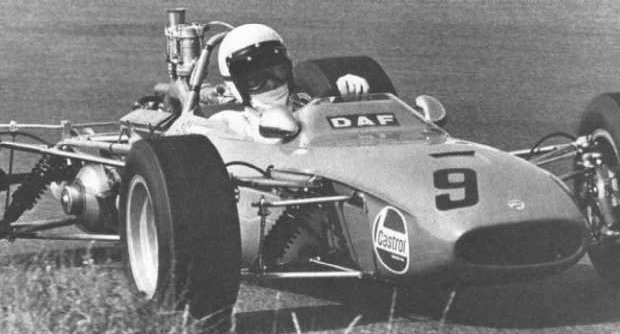DAF
The first DAFs were sold in 1959, with a 600cc air-cooled twin cylinder engine. This same engine remained in production in an enlarged 746cc guise until 1975 in the 33. Over the years, other DAF models were launched – the 44 with 850cc engine; the 55 with 1100cc four-cylinder
Renault engine and the 66 with 1100/1300 Renault engines. Famed for their Variomatic transmission which was the brain child of Dr. Hub van Doorne (van Doorne’s Automobiel Fabrieken = DAF) and was infinitely variable in its ratios so that there were no noticeable gear changes. The pulleys in the transmission expanded and contracted, depending on speed, road conditions and driver’s demand automatically. Final drive to the rear wheels was transmitted by rubber-composite drive belts. In 1975 DAF was taken over by Volvo.
1965
To prove the worth of their system DAF went F3 racing, they started by fitting the system to an Alexis Mk5 chassis for testing and then racing. Initially there were problems in that belts that had been designed for road use weren’t suitable for competition stresses and strains but this problem was gradually overcome. Despite the Alexis chassis not being state of the art there was enough promise shown to consider the project worth further development
1967
For 1967 the Chequered Flag team built a DAF chassis that was designed by Chas Beattie along similar lines to a Brabham. The car showed flashes of promise but all the cars fitted with the Variomatic transmissions suffered from the belt system absorbing more power than a standard gearbox and in the days of the 1-litre engine the loss of even a few bhp was critical. In wet conditions, where the smooth power delivery was beneficial and wheel spin was minimised, the cars were often very competitive. The highlight of the year was an end of season victory for Mike Beckwith at Brands Hatch where he beat a top-class field. Gijs van Lennep also took a win at Skarpnack in Sweden in front of a lesser field.
1968
For 1968, their final year in F3, a pair of Tecnos were suitably modified and raced. Several good results were obtained including a of seconds for Mike Beckwith at Zolder and Jarama. At the end of the year their point proven DAF left F3 racing.
